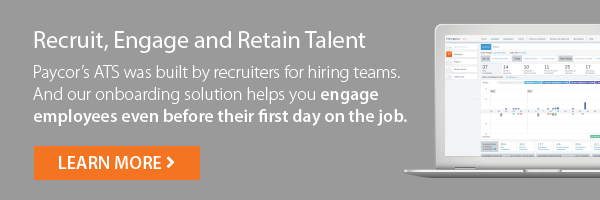Hiring is hard enough. This is especially true if you don’t have the right recruiting tools and templates in place. To help make things easier, we created the toolkits below to help you standardize and templatize a few key pieces of your recruiting process. Use these free HR templates and recruiting resources below to prepare your team for successful hiring and ensure you’re up to speed with best practices for effective recruiting.
Why Hiring is Hard
If you’ve found your way to this page, chances are that you’re looking for a way to make your day to day recruiting a little easier. Recruiting is difficult for many reasons. One of the biggest is that there are so many people and pieces in the hiring process to manage:
- Hiring managers
- Multiple jobs
- Hundreds of candidates
Beyond this, you also need to drive and facilitate communication across many channels:
- Coordinating with candidates to schedule phone screens and interviews
- Coordinating with hiring managers to schedule interviews and gather feedback
- Communicating progress on jobs and keeping the process moving
- Facilitating job and offer approvals, pre-hire assessments, and background checks
- Preparing and sending offer packages
To manage all of this, you can’t just “wing it” and expect to succeed. You need a structured approach and framework that drives your candidates through the three fundamental stages of recruiting:
- Attract and Engage
- Interview and Collaborate
- Offer and Onboard

Free Recruiting & HR Templates
Streamline and optimize your recruiting process starting with these free templates.
Get the The Hiring Manager Intake Form
When a new job opens, before anything else, you need a crystal clear idea of your ideal candidate profile. Getting this information from your hiring managers needs to be standardized so that you can easily get the information you need every time. This is where the Hiring Manager Intake Form comes in. Every time you receive a new job requisition, work through this template with your hiring manager so that the following is always well defined:
- Timeline for hire
- Scope and expectations of the role
- The ideal candidate profile
- Location
- Compensation
- Why candidates should be excited about this role
Benefits of the Hiring Manager Intake Form:
- Helps you take a proactive approach to recruiting
- Makes you better at selling the job
- Enables you to hire better people
- Keeps hiring managers accountable
- Increases employee retention rates
Get Job Description Templates
Your job postings and descriptions often serve as the first impression between you and your candidates. As we all know, first impressions count. You only have a few seconds to capture a job seeker’s attention, and your job description is often the make or break point that decides whether or not a candidate decides to apply for your job. To make sure you are making a good first impression with candidates, download our free job description template below. Feel free to edit and use it as you see fit for your organization! (And also, check out our expert advice on eliminating gender discrimination in job descriptions.)
Get the Candidate Interview Guide
The vast majority of candidates agree that interviews are extremely important and that the quality of the experience can change their minds, one way or the other, about the job and the company. To help HR and SMB leaders fine tune their interview process, download our guide in which we cover key topics such as what makes an ideal interviewer, what makes a successful interview and ideas on what kinds of questions to ask during an interview.
Learn Best Practices for Evaluating Candidates
The best-case scenario for recruiters and hiring teams is to get to the end of the interview stage and have more than one highly qualified candidate. If you’re lucky enough to be in this position, your team will need a strategy for evaluating the candidates who made it to the final round. This of course is a critical moment in the hiring process, because now it’s decision time, and decisions are notoriously vulnerable to subjective impressions or just everyday miscommunication. To avoid common mistakes and perfect your post-interview evaluations, read our article on evaluating candidates.

Get the Job Offer Letter Template
Soon after you make a verbal offer to a candidate, you’ll want to follow up with a formal offer letter. No worries—we’ve got you covered. There are 5 components of an offer letter: the formal offer, topline description of the job, total comp, terms and conditions, and finally a way for the candidate to formally accept the offer. Learn more about how to write an effective offer letter and feel free to download our free template.
Great, you’ve found your dream candidate and they’ve formally accepted the job. But your job’s not done—don’t forget onboarding!
Get Paycor’s Onboarding Toolkit
Onboarding plays a critical role in the success of new hires. Studies show that more than half of new employees who decide to leave within the first year of employment blame lack of training and a failure to feel a sense of belonging or basic comfort with their position. Our Onboarding toolkit is one of our most popular because it includes everything you need to know and prepare prior to your new employee’s first day. Download our free toolkit to learn how to avoid the most common onboarding problems and how to prepare for the first 90 days and beyond. (For a just-the-facts approach to onboarding, you might also want to take a look at our onboarding checklist.)
Hire Faster & Smarter with Paycor Recruiting
Finding, interviewing and hiring talented people are the most important challenges growing businesses face. Paycor Recruiting is a software solution designed and built by recruiters for recruiters and HR hiring teams to help you solve your hiring problems and optimize your recruiting process.










